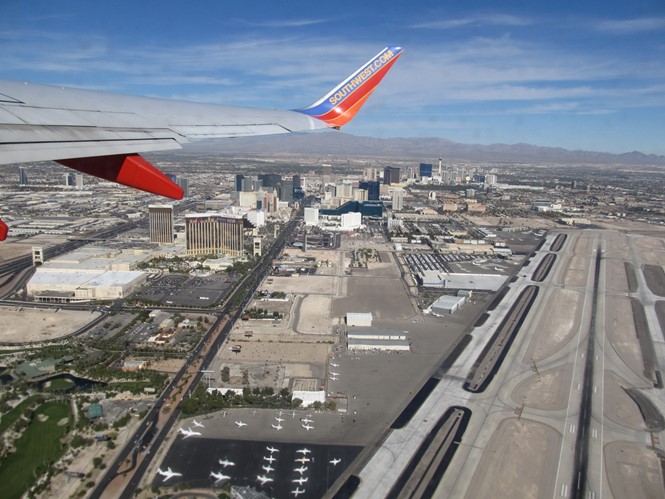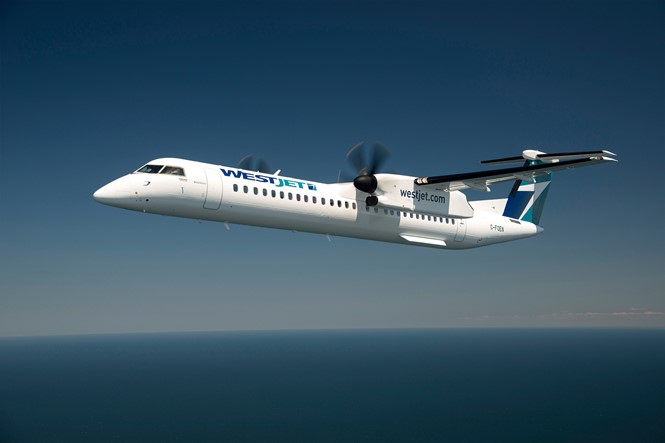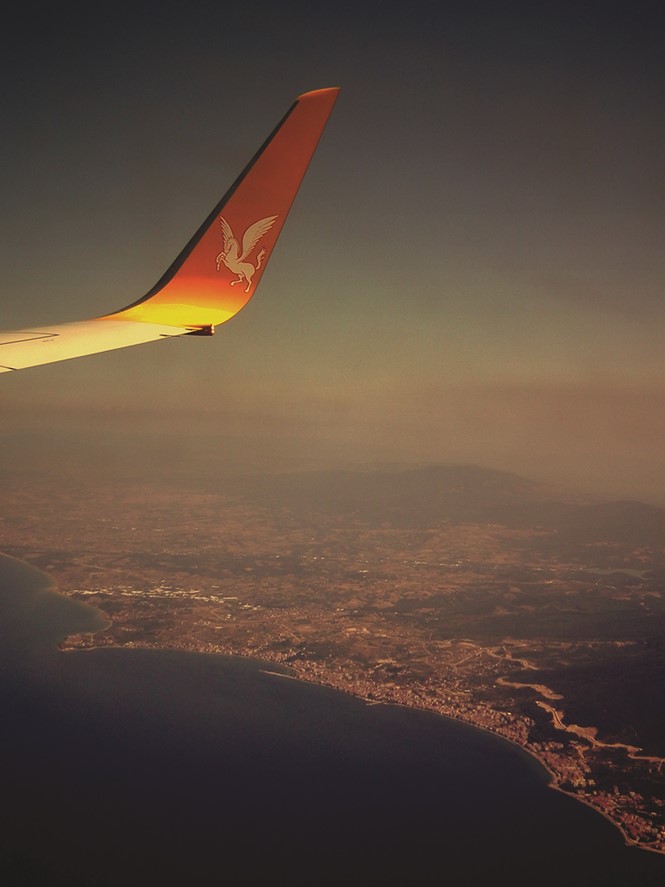Oh, the places you'll go
Budget airlines’ brands have been built upon the destinations that they serve. How do the companies themselves work with partners in the travel and tourism trade to support each other’s communications and brand awareness? Amy Sandys takes to the skies
The Mexican town of Mérida has been the provincial capital of the state of Yucatan since the Spanish conquest of 1542. Saturated with remains of Spanish colonial walls, architecture and Mayan heritage, the historic ambience is offset by the metropolitan hub of bars and galleries in the central town. It is also the destination of numerous flights from North America, Canada and the Caribbean, the most economical of which are run by Canada’s leading budget airline, WestJet. Lauren Stewart, head of media relations at WestJet, says, “Mérida is a very well-known tourist spot in Mexico, but WestJet’s the only one that’s flying in there. It really benefits places like the hotels and even the airports to work with us and help promote the destination.”
Stewart adds, “We do, for somewhere like Mérida, look at unique destinations and we know that Canadians love Mexico, so we get a lot of Canadian trips, and there’s quite a few expats that have homes in Mérida. So we would take a look at that and say, oh you know what, they’re connecting through this city, so why don’t we offer a direct route to there?” It is through strategies like this that budget airlines, including WestJet, have become a leading form of travel after first being introduced during the 1960s. Although the 1950s is often termed ‘the golden age of travel,’ in reality in-flight experiences were lengthy, costly and required the passengers to dress in their best clothes. Often costing 5% of the average annual salary, it was a form of travel reserved only for those who could afford it – confining most of the population to their home countries, or places they could reach by other methods of transport. Indeed, the ability to connect people with faraway family members or untenable holiday destinations is one of the motivating forces behind the budget airline brands around today. Chief commercial officer of Turkey-based budget airline, Pegasus Airlines, Guliz Ozturk, says, “At Pegasus we founded our airline on the vision that it is everyone’s right to fly and so changed flying from a luxury good to something that everyone could access and enjoy.”
Ozturk adds, “We really did succeed in democratising flying in Turkey with the figures illustrating this; we’re Turkey’s fastest growing airline in terms of guest numbers. Between 2006 and end of 2015, Pegasus’ domestic and international traffic in Turkey grew two times faster than the sector average - and we are now expanding that vision of democratised flying to our neighbouring regions.”
And the notion of democratising flight is increasingly relevant as the world becomes connected through globalisation and digital communications. Migration also constitutes a large aspect of this change, with the ‘borderless world’ first prophesised in the 1970s becoming a reality. Particularly in large countries with diverse economies, such as Canada or the US, migration has become necessary to secure university places, job offers – or just to experience new cultures in a different place. The disruption inherent to a long-haul move is expected; but the challenges faced by those who migrate internally is also something of which WestJet is acutely aware. Stewart says, “Part of what we’ve done since our launch, since we came in as the low-fare leader in Canada, is actually stimulate travel – we have studies that show in some of the smaller markets, we stimulated travel by an average of 70%.”
And, Stewart says, fulfilling people’s travel dreams can be as simple as reconnecting them with their families. “These are people who have never had the opportunity because of the cost to get on an airplane, maybe to visit grandma on the east coast, or take a trip out to the west coast of Canada,” she says. “It’s amazing when you hear the stories, they’ve had the opportunities to get on an airplane for the first time and take that dream trip.”
“We work continuously to enhance our guest travel experience through developing creative ways to inspire them
to travel more to see more of the world”
While for some customers a dream trip may constitute returning to the family home and visiting old relatives, Ozturk explains that for some travellers, exploring territory in areas of the world less well-trodden is what they are fixed on. And, Ozturk says, this is something on which the Pegasus brand is built. She says, “Some exciting off-the-beaten-track destinations include North Cyprus, Georgia, Israel, Iran, Lebanon, Jordan, Azerbaijan, Kazakhstan and Kyrgyzstan, with our network stretching as far out as India’s New Delhi, and most recently China’s Kashgar.” Given the rich Arab, Byzantine and Mesopotamian heritage of the Middle Eastern countries in the areas to which Pegasus flies, facilitating access to the region contributes to a wider cultural understanding. Ozturk says, “Affordable prices and easy connections from one end of our network to the other means our guests are given the perfect offering to travel far and wide – and discover places they previously might not have considered as a holiday destination.”
The international experience offered by both carriers, however, means references to each airline’s home country is necessary to ensure the airline remains popular. A recent brand update reinforces this nuanced yet vital element of WestJet’s brand identity, focusing on nationality as a main touchpoint. Stewart says, “We changed our logo to add the Canadian maple leaf. Because now we’re flying internationally, we wanted to show people we’re proud of our Canadian roots. That was a strategic add on our part – we haven’t changed much of how we’re communicating, but when we’re flying out of Canada, it makes people aware of how WestJet is a Canadian airline – and we’re very proud of that.” This strategy means WestJet can buy into the low-cost airline model and fly both internationally and domestically, all while retaining its individual sense of identity. “It’s been a very successful Canadian business story here,” says Stewart, “And we’re very proud of our Canadian roots.”
It is clear that for both Pegasus and WestJet, the connections created between host country and rest of the world is of paramount importance. For some regions, introducing low- cost airlines into the travel mix allows previously isolated areas to become open to travel, tourism and business – an airline synonymous with accessibility serves as a gateway to global culture. Partnerships between airlines and local tourist boards also sees service providers such as hotels, local attractions and tourism offices benefit from the passenger numbers that low- cost air travel brings. And this relationship is mutually beneficial; the better connected an airline is with its guest country, the better reputation it will have for providing an adequate service.
Stewart says, “We work very closely with our destination partners, from before we launch a route, to even if it requires route support. Destination partners include the tourist board, airports, hotels and sometimes, if it’s a WestJet vacation area, its working with the properties there.”
Stewart says WestJet works with over 80 partners to jointly promote the destination. Those partners might come to the airline with a marketing budget in mind and WestJet will help put advertising plans in place. Combining the destination with travel routes also enhances the airline’s reputation – sometimes, a particular brand will be heralded as the lead provider of flights to a particular destination.
With its reach across the Americas and the Caribbean, as well as expansion into more widespread destinations such as the UK, WestJet is well on its way to becoming a leading airline across the Americas. Often, Stewart says, it’s the language used through these partnerships which truly encourage uptake of the cheaper airline flights. This can be particularly effective for those markets which require a connection, which customers often don’t associate with budget airline travel. She says, “We fly to Liberia in Costa Rica, we fly direct from Calgary and we fly direct from Toronto. So we might have a campaign in place in Vancouver to let people know that it’s a very easy hour flight to get to Calgary in order for them to get a very simple, non- stop direct flight to Costa Rica. So you get to paradise in about eight hours, and that’s where we might look at that type of connecting market, for destination awareness.”
As for Pegasus, Ozturk says the digital brand portfolio which can determine the destinations favoured by customers – and also works in the destination’s favour. “We work continuously to enhance our guest travel experience through developing creative ways to inspire them to travel more to see more of the world,” she says. “In line with this view, we’ve created a content- rich website to introduce our guests to our destinations.” Some destinations might be well-known resorts or large European cities with a plethora of guide books and tour options, for the budget airline flying to more obscure places, destination information is largely contingent on the airline. Ozturk continues, “On our website, we have a city guide section, where guests can access valuable information about their destination cities, from history and culture, top places for sightseeing, food and drink and shopping, to more logistical aspects of their travel such as transportation, accommodation and weather forecast. On our event calender, they can browse through festivals, carnivals and other exciting events in the destinations on our network.”
As a result, fledgling place brands can begin from an airline’s description. And for newer tourist destinations, this provides impetus for tourist boards, offices and place branding departments of local authorities to promote a particular airline brand. Stewart says, “WestJet is a very well-respected airline, so the fact that we do fly into places gives them a boost as well. We just launched in Belize, and they were extremely pleased they had their first Canadian airline flying in there, because there’s about 30m Canadians that live here and now they have this opportunity to visit this amazing country they may not have even thought of as a destination.”
As for brand positioning, both Stewart and Ozturk are adamant that the low-cost airline carrier model gives their respective companies the edge over bigger budget, higher cost international flight providers. Ozturk says, “Our brand positioning is based around not only our strength as a young, dynamic low cost airline that has democratised travel in our region, but also challenging dominant low-cost carriers in Europe. This is particularly by providing an even more extensive network that reaches far beyond Europe, where many low-cost carriers don’t fly.” This is also why each airline is continuing to expand at a hugely successful rate – for example, WestJet has also just launched a service from Gatwick.
Stewart says, “We were laying the grounds for Europe for quite a few years, so we wanted to make sure we had co-chair partners and airline partnerships in place, and we wanted to make sure in our own network, we were getting people out of the smaller centres and in the bigger centres like Calgary, Vancouver and Toronto.”
With budget airline brands no longer confined to the constraints of domestic and short-haul flight paths, the past 50 years has been the journey’s beginning. As more markets open and tourism continues to flourish, who knows where they’ll fly to next.















